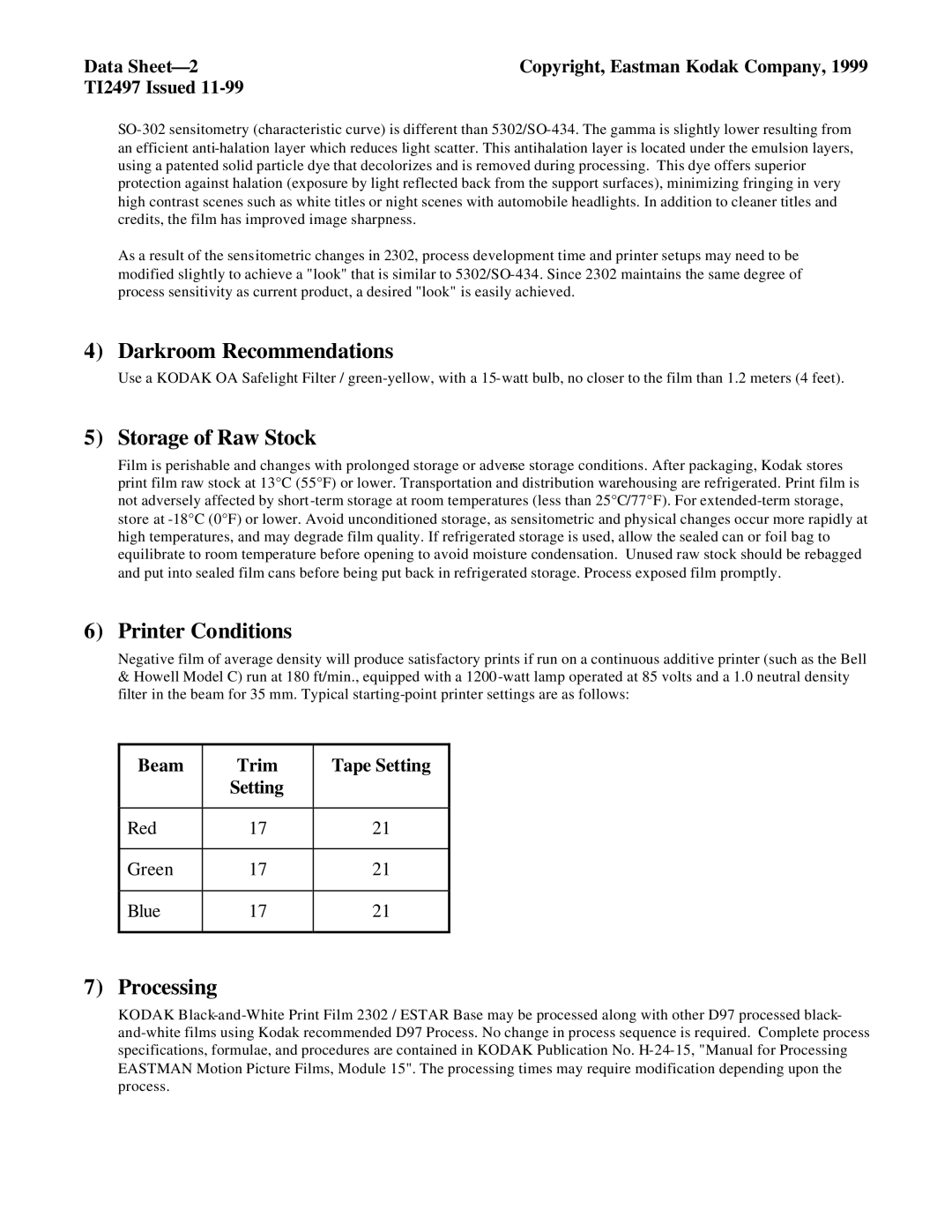Data Sheet—2 | Copyright, Eastman Kodak Company, 1999 |
TI2497 Issued 11-99 | |
SO-302 sensitometry (characteristic curve) is different than 5302/SO-434. The gamma is slightly lower resulting from an efficient anti-halation layer which reduces light scatter. This antihalation layer is located under the emulsion layers, using a patented solid particle dye that decolorizes and is removed during processing. This dye offers superior protection against halation (exposure by light reflected back from the support surfaces), minimizing fringing in very high contrast scenes such as white titles or night scenes with automobile headlights. In addition to cleaner titles and credits, the film has improved image sharpness.
As a result of the sens itometric changes in 2302, process development time and printer setups may need to be modified slightly to achieve a "look" that is similar to 5302/SO-434. Since 2302 maintains the same degree of process sensitivity as current product, a desired "look" is easily achieved.
4) Darkroom Recommendations
Use a KODAK OA Safelight Filter / green-yellow, with a 15-watt bulb, no closer to the film than 1.2 meters (4 feet).
5) Storage of Raw Stock
Film is perishable and changes with prolonged storage or adverse storage conditions. After packaging, Kodak stores print film raw stock at 13°C (55°F) or lower. Transportation and distribution warehousing are refrigerated. Print film is not adversely affected by short -term storage at room temperatures (less than 25°C/77°F). For extended-term storage, store at -18°C (0°F) or lower. Avoid unconditioned storage, as sensitometric and physical changes occur more rapidly at high temperatures, and may degrade film quality. If refrigerated storage is used, allow the sealed can or foil bag to equilibrate to room temperature before opening to avoid moisture condensation. Unused raw stock should be rebagged and put into sealed film cans before being put back in refrigerated storage. Process exposed film promptly.
6) Printer Conditions
Negative film of average density will produce satisfactory prints if run on a continuous additive printer (such as the Bell
&Howell Model C) run at 180 ft/min., equipped with a 1200 -watt lamp operated at 85 volts and a 1.0 neutral density filter in the beam for 35 mm. Typical starting-point printer settings are as follows:
Beam | Trim | Tape Setting |
| Setting | |
| | |
Red | 17 | 21 |
| | |
Green | 17 | 21 |
| | |
Blue | 17 | 21 |
| | |
7) Processing
KODAK Black-and-White Print Film 2302 / ESTAR Base may be processed along with other D97 processed black- and-white films using Kodak recommended D97 Process. No change in process sequence is required. Complete process specifications, formulae, and procedures are contained in KODAK Publication No. H-24-15, "Manual for Processing EASTMAN Motion Picture Films, Module 15". The processing times may require modification depending upon the process.
